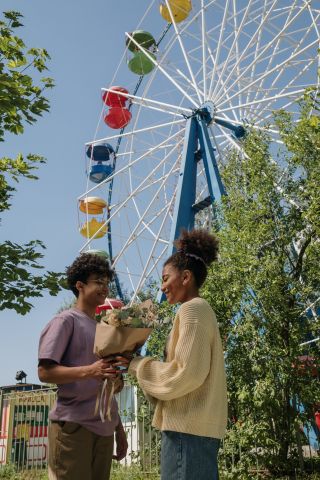Relationships
3 Behaviors That Form Relationships
Affectionate touch, for sure, but also shared laughter.
Updated July 3, 2023 Reviewed by Gary Drevitch
Key points
- Researchers tracked single college students as they formed new relationships during their first semester.
- Shared laughter, expressions of gratitude, and affectionate touch forecasted interest in seeing someone again.
- Shared laughter was the strongest predictor of relationship formation.

Think about the last time you met someone new and felt an instant connection. What was it about that interaction, that person, that made you “click”? And what happened after you met them? Did you stay in touch? Did they become your romantic partner or a lifelong friend?
Why do we click with some people and not others? Why do some social interactions turn into friendships and romantic relationships, and others do not? Jolink and colleagues tried to answer these questions by tracking single college students as they met new people during their first semester at college. They were interested in whether people would be more likely to “click” and form relationships with someone they met when their initial interaction with that person included behaviors that promote connection and affiliation. They looked at three of these relationship-promoting behaviors: shared laughter, how much the person that the participant was interacting with expressed gratitude, and whether the participant touched the other person affectionately.
Why these three behaviors?
- Shared laughter promotes feelings of similarity, suggesting you see the world the same way as the other person.
- Expressions of gratitude act as a signal—someone who expresses gratitude is likely to be more aware and responsive, which are good things to have in a relationship partner.
- Affectionate touch promotes feelings of intimacy and connection.
Participants were instructed to report when they had “a short face-to-face conversation or a longer social event, but one that makes you think there may be potential for friendship or a romantic relationship with that person.” They were supposed to do this the first time they had an interaction like this with someone and were asked to complete reports for up to nine potential partners.
Across the first semester of college, participants in the study each reported on an average of 4-to-5 interactions with potential partners, with some people reporting no interactions and some reporting more than 10. Not every potential interaction turned into a relationship. At the end of the semester, for those participants who provided reports, 61 percent of their potential friends became friendships, and 57 percent of their romantic interests became romantic relationships.
So, what did the researchers learn about relationship formation? As they had predicted, all three relationship-promoted behaviors were related to interest in seeing and interacting with the new person again. When people laughed with someone new, they felt more similar to them. When the new person expressed gratitude, they perceived the person as more responsive. When the participant touched the new person in an affectionate way, they felt greater intimacy. And when people perceived greater similarity, responsiveness, and intimacy, they were more likely to want to interact with that person again in the future. This was true for friendships and romantic relationships alike.
What about the actual formation of relationships? People were most likely to form high-quality relationships with people when they reported sharing laughter with them during their initial interaction. They also found that people were more likely to form high-quality relationships with people that they’d reported being interested in seeing again, suggesting that interactions characterized by shared laughter, gratitude expressions, and affectionate touch help make people “click” and that feeling of “clicking” then catalyzes future interactions and ultimately relationship formation.
This research sheds light on a few particular behaviors that are present during moments of connection, but when it comes to the ingredients that lead people to “click,” there is a lot that researchers still need to figure out. What is it exactly that makes us laugh with one person and not another? Why do we want to pat the shoulder of one person but not another? If it’s not similarity (and it seems it isn’t), then what is it?
Facebook image: Monkey Business Images/Shutterstock
References
Jolink, T. A., & Algoe, S. B. (2023). What Happens in Initial Interactions Forecasts Relationship Development: Showcasing the Role of Social Behavior. Social Psychological and Personality Science. Advanced online publication. https://doi.org/10.1177/19485506231153438


